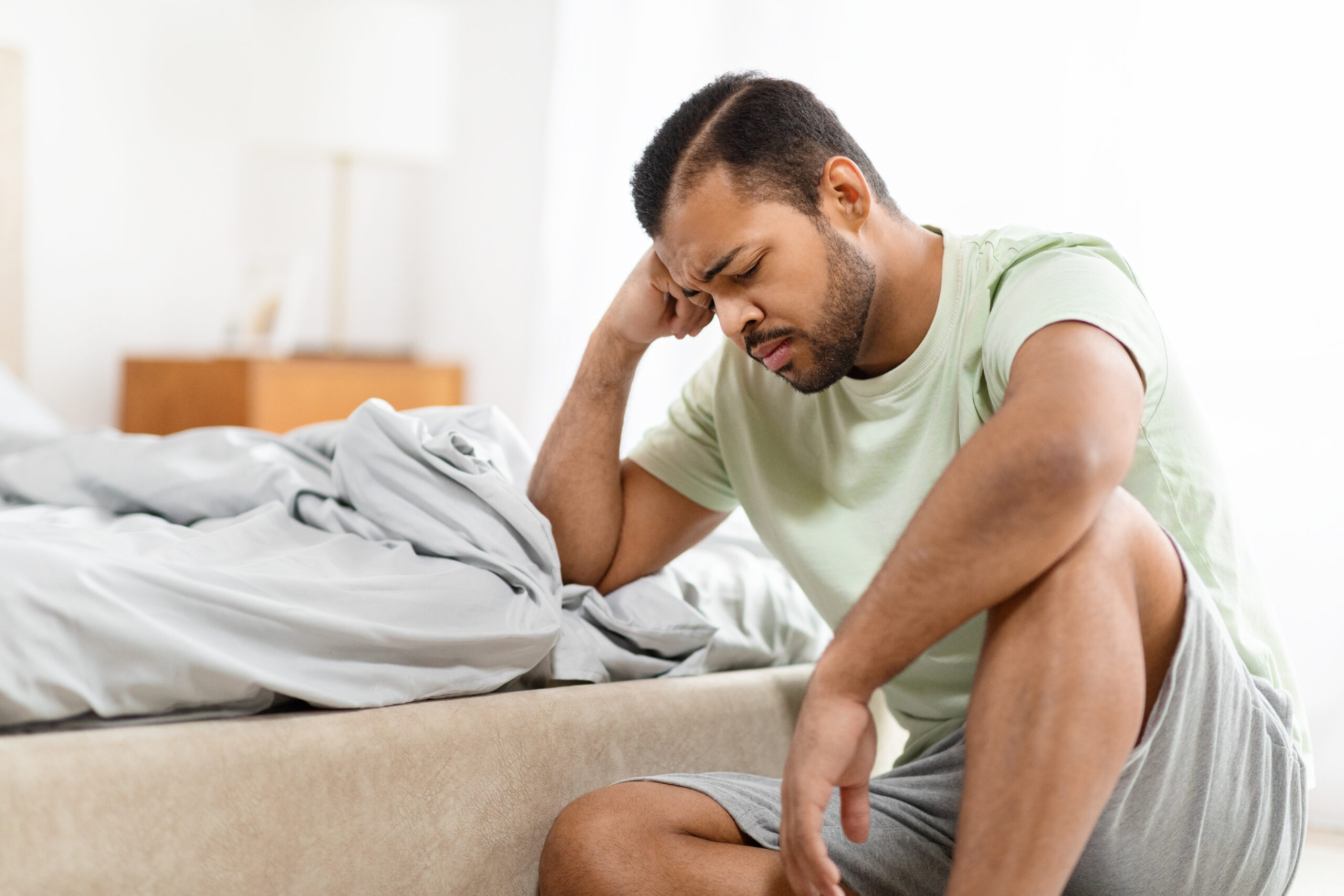Penile pain can be an uncomfortable and distressing condition, but it’s something that many men experience, often in silence. Whether it’s sharp pain, aching, or discomfort in the tip of the penis, the shaft, or even after ejaculation, it can be difficult to pinpoint what’s causing it. If you’ve been struggling with penile pain, you’re not alone, and understanding the root causes and treatment options can help you take control of your health.
In this article, we will explore the common causes of penile pain, the role of pelvic floor muscles, and potential treatment solutions that can help alleviate the discomfort.
Understanding Penile Pain
Penile pain manifests in various ways. For some men, it may be a dull ache in the shaft, while others might experience sharp pain in the tip of the penis, particularly after ejaculation. Some men report discomfort during erections, while others feel pain constantly, exacerbated by sitting or even after bowel movements. Regardless of the type or timing of the pain, it can be extremely concerning and often leads to visits to medical professionals in search of answers.
Typically, when men experience these symptoms, they turn to their primary care doctor or a urologist. It’s common for doctors to rule out conditions such as infections, prostate problems, or even cancer after conducting basic tests. In some cases, antibiotics are prescribed, even if no infection is found, leaving the underlying cause of the pain unresolved.
So, what could be causing this persistent discomfort if common causes have been eliminated?
The Role of the Pelvic Floor Muscles
One of the most overlooked causes of penile pain is the pelvic floor muscles. These muscles, located within the pelvis, play a crucial role in supporting the organs in the lower abdomen, including the bladder, rectum, and penis. They also help control urination and sexual function.
While many people associate pelvic floor muscles with women’s health (particularly in relation to childbirth), these muscles are equally important for men. In fact, muscle dysfunction in the pelvic floor can contribute significantly to penile pain. When these muscles become tense, weak, or imbalanced, they can exert pressure on nearby structures, including the penis, leading to discomfort or pain.
How Pelvic Floor Muscles Cause Penile Pain
The pelvic floor muscles form a supportive “hammock” structure that spans from the pubic bone at the front of the body to the tailbone. This network of muscles also surrounds the bladder, prostate, and rectum, making them integral to the functioning of these organs. When the pelvic floor muscles become tight, strained, or injured, they can trigger pain in the penis and surrounding areas.
In particular, muscle dysfunction in the pelvic floor can cause the following symptoms:
- Penile pain: Pain can be localized in the penis itself, including the tip, shaft, or base.
- Urinary issues: Since the pelvic muscles control urine flow, dysfunction can lead to urinary frequency, urgency, or discomfort while urinating.
- Sexual dysfunction: Pelvic floor muscle tension can affect erectile function, causing pain during erections or after ejaculation.
- Postural discomfort: Sitting for extended periods or certain physical activities can exacerbate pelvic floor muscle tension, leading to increased pain.
Common Causes of Pelvic Floor Muscle Dysfunction
The pelvic floor muscles can be affected by several factors, including:
- Stress: Psychological stress can lead to muscle tension, including in the pelvic floor, which may result in pain in the penis or surrounding areas.
- Injuries: Orthopedic issues such as hip or back injuries, or even sports-related injuries, can affect the pelvic floor muscles. These injuries can result in chronic pain in the pelvic region.
- Previous surgeries: Surgeries involving the prostate, bladder, or other pelvic organs may lead to scarring or muscle dysfunction in the pelvic floor.
- Sedentary lifestyle: Lack of physical activity can contribute to weak pelvic muscles, which can become overstretched or misaligned, leading to pain.
- Overuse: Excessive physical activity or certain exercises can strain the pelvic floor muscles, leading to dysfunction and pain.
The Connection Between Pelvic Floor Dysfunction and Penile Pain
Understanding the relationship between the pelvic floor muscles and penile pain is crucial to recognizing the potential causes of discomfort. As mentioned earlier, dysfunction in these muscles can lead to pain in the penis, but the connection doesn’t end there. Pelvic floor dysfunction can also affect urinary function, sexual performance, and even cause pain during or after sitting or bowel movements.
For example, if you’ve been experiencing difficulty urinating, such as feeling like you cannot fully empty your bladder, or if you notice changes in your urine stream, these symptoms may be related to pelvic floor muscle dysfunction. Likewise, men who suffer from erectile dysfunction or painful erections may also be dealing with an underlying issue in the pelvic region.

How to Fix Penile Pain Caused by Pelvic Floor Dysfunction
If you suspect that pelvic floor dysfunction is contributing to your penile pain, there are several steps you can take to address the issue.
1. Pelvic Floor Physical Therapy
One of the most effective treatments for pelvic floor muscle dysfunction is physical therapy. A trained pelvic floor therapist can help you identify which muscles are tight or weak and develop a tailored treatment plan to restore balance. This may involve:
- Relaxation techniques: Learning how to relax overactive muscles can help alleviate pain.
- Strengthening exercises: Strengthening weak pelvic floor muscles can provide better support to the organs and structures in the pelvic region.
- Postural training: Improving posture and body mechanics can help relieve tension in the pelvic area.
2. Stress Management Techniques
Since stress is a major contributor to muscle tension, managing stress can have a significant impact on pelvic floor health. Techniques such as meditation, deep breathing exercises, yoga, or even therapy can help reduce the impact of stress on your body and alleviate pelvic muscle tension.
3. Addressing Injuries and Physical Imbalances
If your pelvic floor dysfunction is the result of an injury, working with a physical therapist or chiropractor to address any misalignments or dysfunctions in the spine or hips may help relieve pelvic floor tension. This is particularly important for men who have experienced back or hip injuries that could be affecting the pelvic area.
4. Lifestyle Modifications
Incorporating regular exercise, particularly pelvic floor exercises (such as Kegel exercises), into your routine can help maintain the strength and flexibility of these muscles. Avoiding prolonged sitting and incorporating movement throughout the day can also reduce tension in the pelvic region.
5. Medical Consultation and Treatment
If you’re experiencing ongoing pain or discomfort, it’s important to consult with a healthcare provider. A urologist or physical therapist specializing in pelvic health can help assess your condition and recommend appropriate treatment options. In some cases, medication or injections may be necessary to manage pain or inflammation.
Conclusion
Penile pain is a complex condition that can stem from various causes, including pelvic floor muscle dysfunction. Understanding the connection between these muscles and penile pain can help men better understand their symptoms and take appropriate action. If you’re experiencing penile pain, whether it’s related to urination, sexual function, or general discomfort, addressing pelvic floor health through physical therapy, stress management, and lifestyle changes can help restore balance and alleviate pain.
If you’re unsure about the cause of your pain, seeking a consultation with a knowledgeable healthcare provider is crucial. Remember, you don’t have to suffer in silence—there are treatments available that can help you take control of your health and find relief from penile pain.
Also Read: Is Sitting Pain Linked to the Pudendal Nerve?
About:
I’m Hina Sheth. I have been treating complex orthopedics, sports and pelvic floor physical problems for over 25 years with amazing results. Now I want to bring my knowledge to the global community so I can spread my knowledge to you.
Our bodies are complex systems of 600 muscles and organs intertwined in a fascial system that all work together. Imbalances in this system such as trigger points, visceral and myofascial restrictions can lead to joint, pelvic, and organ issues.
Factors like nutrition, exercise, sleep, and stress play a crucial role. Unfortunately, our current healthcare model does not look at our bodies as a whole and oftentimes compartmentalize musculoskeletal injuries and dysfunctions.
At Rebalance, our goal is to holistically treat this complex system to restore harmony in the body. By addressing these imbalances, we help clients improve their overall health and well-being. Our vision is to empower individuals to create a healthier lifestyle for themselves.






